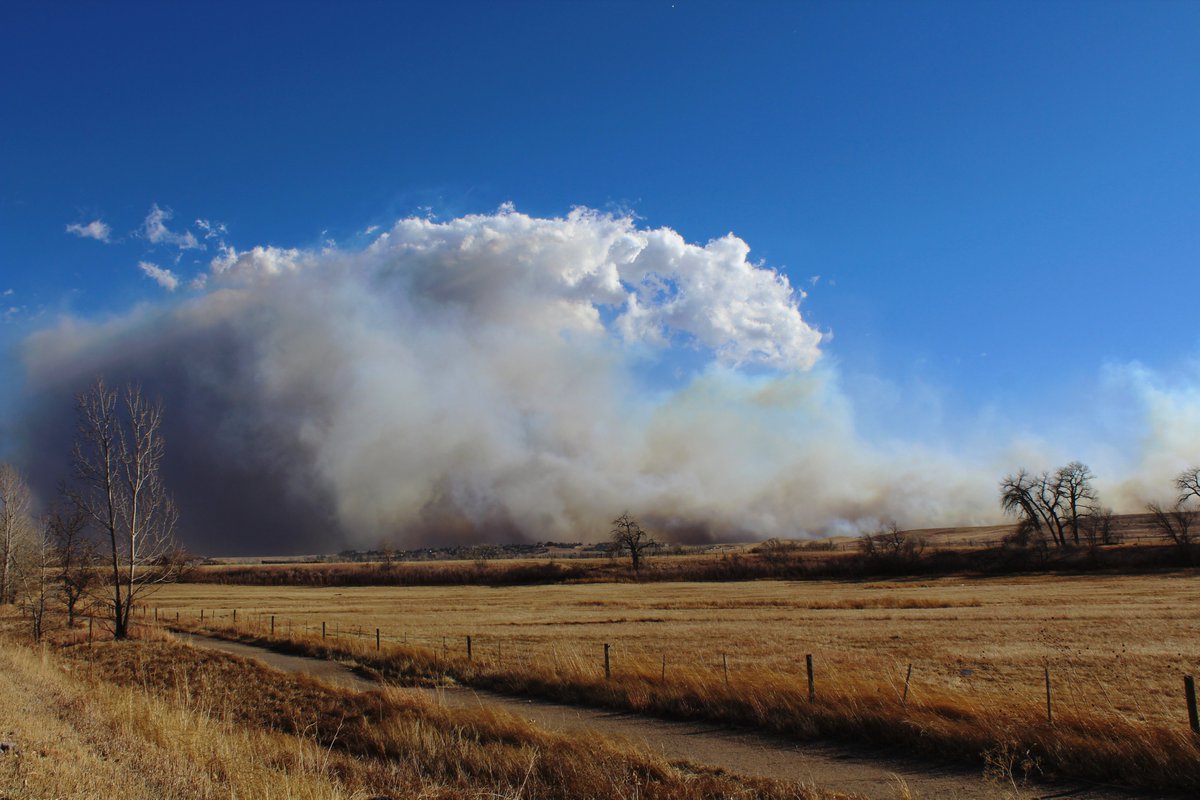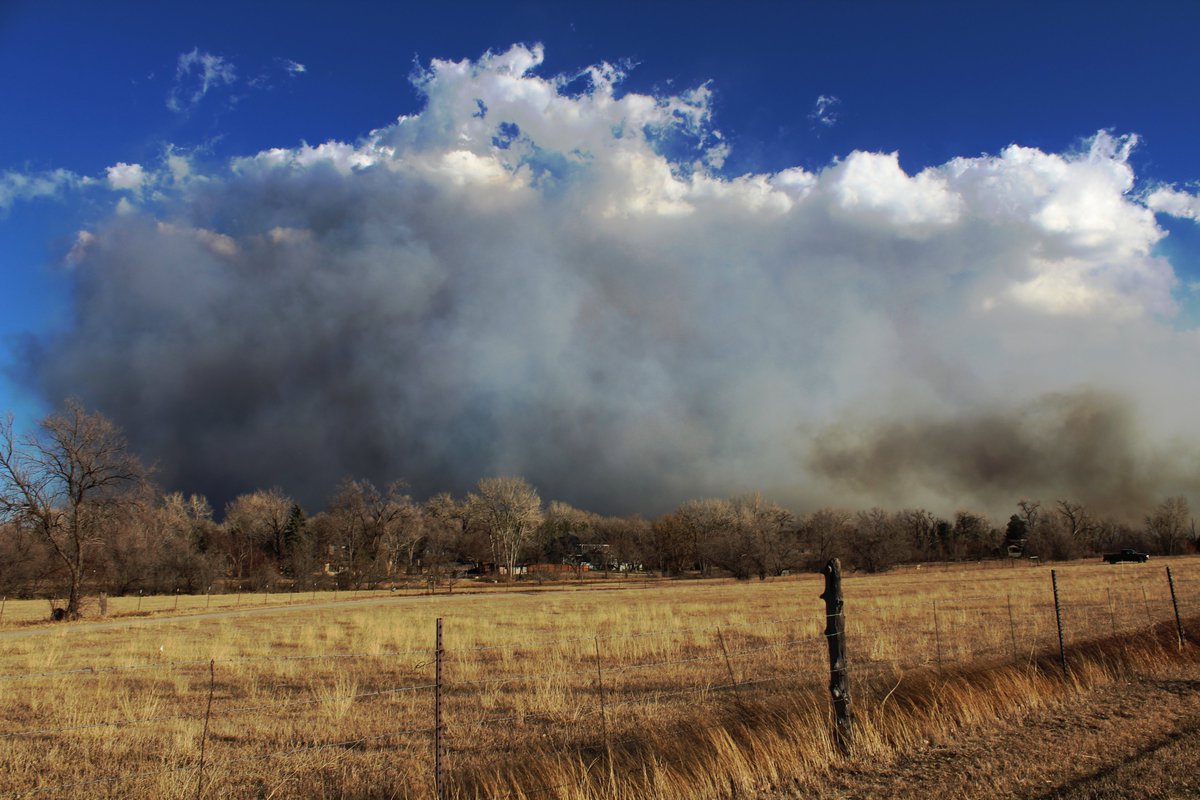
Some photos, footage, and commentary from yesterday's devastating #MarshallFire in Boulder County. All photos and videos taken at various points along South Boulder Road (north side of the fire, looking south, on 12/30/21). Winds were gusting around 90mph at the time. #COwx (1/4) 



Fire behavior was as you'd expect in grass/brush amid extreme wind & drought conditions: rapid rates of spread, continuous spotting and periodic sheeting fire. Fire jumped 6-lane Hwy 36 like it was nothing, and there was a 2+ mile long active fireline. #MarshallFire #COwx (2/4) 

Behavior and dynamics of the fire plume were fascinating...and scary. A nearly horizontal plume, tilted by extreme westerly downslope winds, transitioned into a shallow pyroCu plume at the top of a hydraulic jump within a pronounced mountain wave. #MarshallFire #COwx (3/4) 





A brief video demonstrating the kind of extreme wind conditions during the #MarshallFire on 12/30/21. Believe or not, winds had *decreased* by this point and were "only" gusting 70-75mph (vs. 90-95 mph earlier in the day). #COwx (4/4)
• • •
Missing some Tweet in this thread? You can try to
force a refresh








